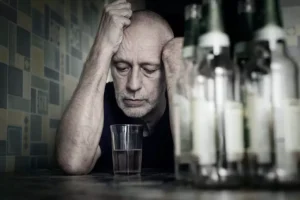Expanding the continuum of substance use disorder treatment: Nonabstinence approaches PMC

Indeed, there is anecdotal evidence that this may be the case; for example, a qualitative study of nonabstinence drug treatment in Denmark described a client saying that he would not have presented to abstinence-only treatment due to his goal of moderate use (Järvinen, 2017). Additionally, in the United Kingdom, where there is greater access to nonabstinence treatment (Rosenberg & Melville, 2005; Rosenberg & Phillips, 2003), the proportion of individuals with opioid use disorder engaged in treatment is more than twice that of the U.S. (60% vs. 28%; Burkinshaw et al., 2017). Two publications, Cognitive Behavioral Coping Skills Training for Alcohol Dependence (Kadden et al., 1994; Monti, Kadden, Rohsenow, Cooney, & Abrams, 2002) and Cognitive Behavioral Therapy for Cocaine Addiction (Carroll, 1998), are based on the RP model and techniques.
Lapse-activated consumption

One day, when he was faced with a stressful situation, he felt overwhelmed, gave in to the urge, and had a drink. I have lost all that time,” which can trigger a self-destructive mindset and potentially lead to further relapse. In the multifaceted journey of overcoming addiction and living a healthier life, individuals often encounter a psychological phenomenon known as the abstinence violation effect (AVE). It sheds light on the challenges https://ecosoberhouse.com/ individuals face when attempting to maintain abstinence and how a single lapse can trigger a surge of negative emotions, potentially leading to a full relapse or a return to unhealthy living (Collins & Witkiewitz, 2013; Larimer, Palmer, & Marlatt, 1999). The working group also recommended that early childhood through adult education include knowledge about people of African descent, and their contributions to civilization and culture.
Learn From Relapse
Cognitive behaviour therapy (CBT) is a structured, time limited, evidence based psychological therapy for a wide range of emotional and behavioural disorders, including addictive behaviours1,2. CBT belongs to a family of interventions that are focused on the identification and modification of dysfunctional cognitions in order to modify negative emotions and behaviours. Gordon as part of their cognitive-behavioral model of relapse prevention, and it is used particularly in the context of substance use disorders. Much of the focus on book challenges has centered around what is “age appropriate,” determinations educators have always had to make, guided by inputs from reading experts and library-media specialists and even publishers, who often include age guidance on book jackets.
- Determining age appropriateness is not a new factor in building educational environments in schools, but now, the professional expertise of local educators and librarians is being challenged and supplanted by people without training in these topics.
- Among the psychosocial interventions, the Relapse Prevention (RP), cognitive-behavioural approach, is a strategy for reducing the likelihood and severity of relapse following the cessation or reduction of problematic behaviours.
- The recently introduced dynamic model of relapse [8] takes many of the RREP criticisms into account.
- Furthermore, the federal government should convene a national summit on ending discriminatory educational censorship efforts across the US.
- The abstinence violation effect (AVE) highlights the distinction between a lapse and relapse.
2. Established treatment models compatible with nonabstinence goals
- Whereas tonic processes may dictate initial susceptibility to relapse, its occurrence is determined largely by phasic responses–proximal or transient factors that serve to actuate (or prevent) a lapse.
- The following sections provide an overview of major theoretical, empirical and applied advances related to RP over the last decade.
- Outcome expectancies can be defined as an individual’s anticipation or belief of the effects of a behaviour on future experience3.
- Implicit measures of alcohol-related cognitions can discriminate among light and heavy drinkers [58] and predict drinking above and beyond explicit measures [59].
- Florida’s discriminatory educational censorship laws sparked numerous ongoing lawsuits, which challenged them on the grounds of being vague and overly broad, as well as for violating constitutional free speech and equal protection guarantees in the US Constitution.
- As students who have passed through Florida’s schools become adults, their experience of discriminatory censorship suppresses free expression and access to information and may ultimately thwart the informed political participation required for US democracy to thrive.
The treatment is not lapse prevention; lapses are to be expected, planned for, and taken as opportunities for the client to demonstrate learning. Most often, relapse tends to be construed as a return to pretreatment levels of occurrence of the targeted behavior. Although there is some debate about the best definitions of lapse and relapse from theoretical and conceptual levels, these definitions should suffice. A specific process has been described regarding attributions that follow relapse after an extended period of abstinence or moderation. The abstinence violation effect can be defined as a tendency to continue to engage in a prohibited behavior following the violation of a personal goal to abstain.
Compared to a control group, those who practiced self-control showed significantly longer time until relapse in the following month. Efforts to develop, test and refine theoretical models are critical to enhancing the understanding and prevention of relapse [1,2,14]. A major development in this respect was the reformulation of Marlatt’s cognitive-behavioral relapse model to place greater emphasis on dynamic relapse processes [8]. Whereas most theories presume linear relationships among constructs, the reformulated model (Figure (Figure2)2) views relapse as a complex, nonlinear process in which various factors act jointly and interactively to affect relapse timing and severity. Against this backdrop, both tonic (stable) and phasic (transient) influences interact to determine relapse likelihood. Tonic processes include distal risks–stable background factors that determine an individual’s “set point” or initial threshold for relapse [8,31].
More recent versions of RP have included mindfulness-based techniques (Bowen, Chawla, & Marlatt, 2010; Witkiewitz et al., 2014). The RP model has been studied among individuals with both AUD and DUD (especially Cocaine Use Disorder, e.g., Carroll, Rounsaville, & Gawin, 1991); with the largest effect sizes identified the abstinence violation effect refers to in the treatment of AUD (Irvin, Bowers, Dunn, & Wang, 1999). As a newer iteration of RP, Mindfulness-Based Relapse Prevention (MBRP) has a less extensive research base, though it has been tested in samples with a range of SUDs (e.g., Bowen et al., 2009; Bowen et al., 2014; Witkiewitz et al., 2014).

